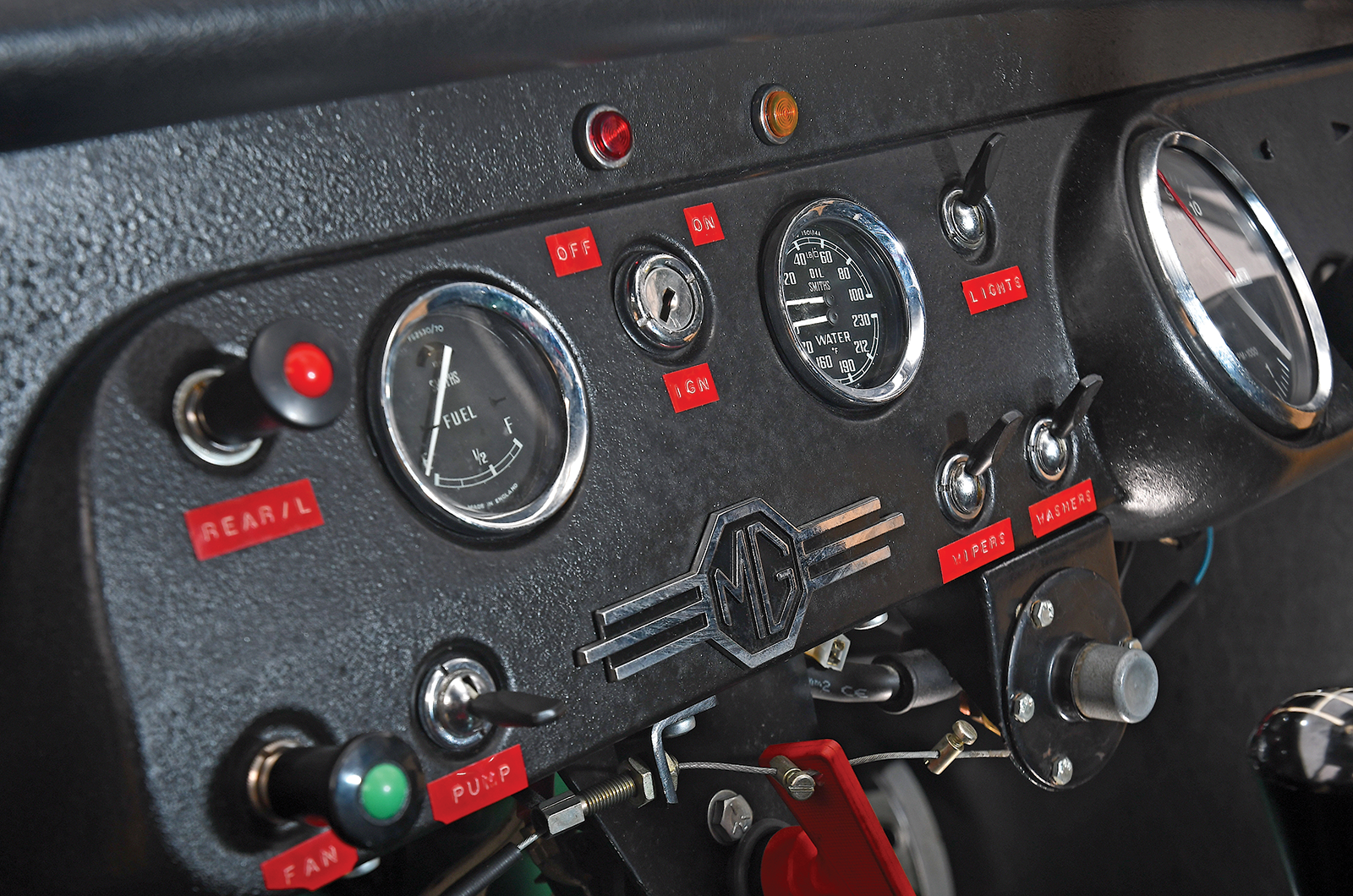Only a registration in California in 1979 gives any clue about what the car was up to: presumably it became someone’s weekend toy, but it also spent many years in storage before coming up for sale with a West Coast dealer in 2000.
It was brought back to the UK that same year, and while it was surrounded by rumours of period competition history, mentions of Sebring obscured its identity as a works Bridgehampton Midget.
MG collector Dave Saunders was one of the few who had an inkling of what it was, so he bought the car in 2003 and set about a restoration.
Many of the old Abingdon team members were still alive and verified 6 GRX’s identity upon Saunders’ invitation, and the Californian climate had been typically kind to it.
‘First and second are dispatched so quickly that your gearchanging ability is the only limiting factor in a 0-60mph sprint’
Stan Chalmers, who had wired the car in 1965, recognised his own handiwork in the loom and built an exact replacement for it, while Den Green identified the seat as one originally moulded to Aaltonen’s torso.
The MG still had its original rollcage, too, notably thicker than was normal for Abingdon competition cars in order to satisfy the more strict American scrutineers.
The restoration revealed three layers of paint reflecting the car’s history: the worn red from its time on the road and in storage; Ray Cuomo’s Shelby-inspired blue; and the original British Racing Green.
Since restoration, 6 GRX has enjoyed a resurgent competition career
Only the floor and bottom corners of the steel rear wings needed major repair, and even the original works brake calipers had survived.
Saunders replaced the Midget’s combined brake/clutch master cylinder with separate systems, mindful that the early set-up was prone to boiling its fluid.
The engine was rebuilt by Swiftune in Kent, and Saunders embarked on the Midget’s second racing career.
Countless meets in Masters Historic Racing took the MG across the UK and Europe, including a first in class at Circuit Paul Ricard in 2008.
The competition modifications to this MG Midget are more than just skin deep
Mäkinen’s car remains missing, making this the only extant example of a works Midget that, beyond the circles of the MG Car Club where Saunders was well known, has long flown under the radar.
Had its exploits been in an event better known to UK enthusiasts, a Rallye Monte-Carlo perhaps, this class-winning works car might have been more famous.
Thankfully, due to the outstanding luck that had preserved it so well, it found its way back to those who recognised it.
Having enjoyed only a single works outing, 6 GRX is back in rude health and making up for lost time in its roaring, gear-whining, fuel-gargling retirement.
Images: John Bradshaw
Thanks to: The Classic Motor Hub
Enjoy more of the world’s best classic car content every month when you subscribe to C&SC – get our latest deals here
READ MORE
Your classic: MG Midget
Sunbeam Tigers: recreating Rallye Monte-Carlo magic
Shared heart: MG Midget 1500 vs Triumph Spitfire 1500
Charlie Calderwood
Charlie Calderwood is Classic & Sports Car’s Features Editor























